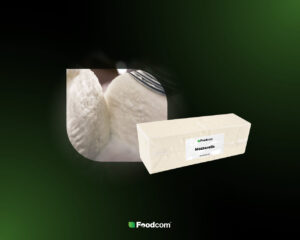- Rising raw material costs and extreme temperatures are driving up prices for popular cheeses like Gouda and Edam.
- Butter prices remain high amid strong demand and extreme weather.
- New Zealand shifts focus to higher-margin dairy products, while China boosts its whole milk powder production amidst a raw milk surplus.
Hello Partners!
Welcome back to our Newsletter!
Despite the usual summer slowdown, the market is bustling with activity. While some clients are taking their seasonal breaks, transaction volumes are notably higher than last summer. Today’s edition of the newsletter, full of up-to-date analysis and trends, confirms that good things are worth waiting for.
Let’s take a look at what else is happening in the dairy market!
Products of the week
Skimmed Milk Powder
Current information on the skimmed milk powder (SMP) market indicates price stability. Low purchasing activity is observed, which affects lower market dynamics. This trend can be attributed to the holiday season.
Cheeses
Price increases for all popular cheeses, including Mozzarella, Cagliata, Gouda, Edam, Cheddar and Emmental, are linked to higher raw material costs and extreme temperatures. Cheese production is becoming more expensive, resulting in price increases. Producers have announced that offers for September will be at least 100 EUR/MT higher.
Fats
Butter prices in Europe remain high, oscillating between 6800 and 7000 EUR/MT. In addition, after several quiet weeks in the butter market, we are seeing increased activity from end users and traders. The increase in cream prices continues for another week in a row, further fueling the market. All this is happening against the backdrop of extreme weather conditions, which continue the upward trend in butter prices.
Prices for anhydrous milk fat (AMF) and butter oil also went up.
Liquids
Cream prices in Europe continue to rise, maintaining the upward trend of the previous week. Reduced milk availability across the region is contributing to this phenomenon. Increased demand for liquid dairy products is likely to keep the cream market strong.
Prices for skimmed milk concentrate are on the rise and are now up to 2200 EUR/MT. This upward trend is noticeable throughout the dairy sector.
In Europe, the raw milk market faces challenges primarily due to high temperatures that reduce milk production, thereby limiting raw milk availability and driving up prices. Additionally, increased production and transportation costs contribute to market pressures. Despite these challenges, demand for raw milk continues to be stable.
Whey powders
The market for sweet whey powder (SWP) has seen a significant price increase of about 10% over the past two weeks. The basic raw material, Sweet Whey Concentrate, has become twice as expensive, which has directly influenced the increase in SWP prices. Current prices are already approaching around 1000 EUR/MT.
What else?
The U.S. Department of Agriculture reports a slight decline in New Zealand’s whole milk powder (WMP) production for 2024, expected to total 1.375 million tons as processors shift focus to higher-margin products like butter and cheese. Despite this, New Zealand’s WMP exports are forecast to increase to 1.45 million tons, driven by strong demand from Southeast Asia and the UAE. In contrast, China is set to boost its WMP production in response to a surplus of raw milk, although domestic challenges may temper growth. This shift in production strategies reflects broader changes in global dairy market dynamics.
China has significantly increased its dairy self-sufficiency, reaching a production goal of 40.5 million metric tons in 2023, a year ahead of schedule, reducing its reliance on imported dairy products like liquid milk and whole milk powder. According to Mary Ledman from RaboResearch, this growth was supported by government initiatives similar to a farm bill passed around 2018-19, which aimed to boost milk production by 11 million metric tons. Despite this, China continues to import whey powder from the U.S., mainly used for feeding swine, due to its limited domestic cheese production.
![What’s hot in the dairy? Rising cheese costs, milk scarcity, and more! [229th Edition of Foodcom DAIRY Newsletter] What’s hot in the dairy? Rising cheese costs, milk scarcity, and more! [229th Edition of Foodcom DAIRY Newsletter]](https://foodcom.pl/wp-content/uploads/2024/06/Foodcom_SA_Dairy_Newsletter_3-1520x760.jpg)






